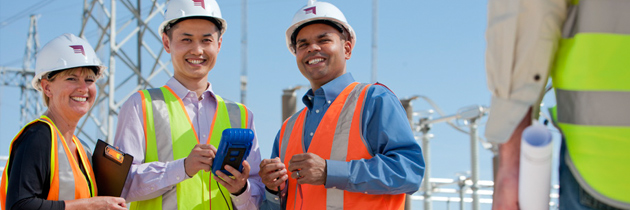History
Right from the start, the electricity supply network has been the backbone of growth and development in South Australia.
In its early days, the arrival of electricity supply rapidly improved the quality of life of South Australians.
As South Australia matured, the expanding transmission network opened up new industries and opportunities. Today, our modern transmission network continues to support South Australians by providing safe, affordable and reliable energy solutions to power homes, businesses and the economy.

In 1998, the South Australian Premier, John Olsen, announced the privatisation of the Electricity Trust of South Australia (ETSA). The subsequent separation and sale saw the establishment of ElectraNet. The distribution network retained the name, trading under ETSA Utilities, now known as SA Power Networks.
On 31 October 2000, ElectraNet began trading as a private company, operating South Australia’s high-voltage electricity transmission network.
The building that hosts ElectraNet’s corporate headquarters in Rymill Park was built in 1908, and was originally used as an electrical converter station for Adelaide’s horse-drawn tramway system. The construction of the converter station was one of the first steps in the modernisation of what was Adelaide’s major form of public transport at the time.
In 1984, the building was registered for State Heritage. It’s a rare example of a building type that became obsolete due to technological and architectural changes. The designers of the original converter station, English and Soward, also created many other original foundations for the East End cultural precinct of Adelaide.
Rymill Park sits on the eastern fringes of Adelaide’s central business district. This area of Adelaide boasts historic charm with modern sophistication. Adelaide’s East End features original 19th century architecture contrasting with ultra-modern interiors – and ElectraNet’s corporate headquarters is no exception.
South Australia’s electricity journey started back in 1885, when J.W.H Hullet became the first person to light a private residence through what was known as a hydro-electric plant. But it wasn’t until 1897 that the South Australian Parliament passed a bill to form a privately owned electricity company to generate and transmit power to the Port Adelaide area.
The demand for electricity soared throughout the early 1900s. By 1917, electricity supplies had been extended to Norwood, Unley, Hindmarsh and Thebarton, and the demand was so high that the powerhouse that had initially been built in Grenfell Street needed to expand its capacity. By 1923, a further power station was built in Osborne to cope with customer demand.
The 1920s saw new transmission lines being built, expanding out past the metropolitan area. By the Second World War, transmission lines were delivering power to the farmlands of South Australia, providing electricity to industrial sites and important war-effort supply stores.
Eventually, the South Australian Government reasoned that adequate, reliable and centrally planned electricity supply was key to the growth of the state’s industry and agriculture. The Government formed the Electricity Trust of South Australia (ETSA) and nationalised privately owned electricity companies.
During the 1950s, the Port Augusta power stations came online and the Power Line Carrier communications system was first used to relay a conversation between Northfield and Port Augusta. It enabled the remote operation and monitoring of the transmission network. ElectraNet has the largest private telecommunications network in the state.
The Northern Power Station was commissioned in 1985 to supply additional base load power. The connection between Adelaide and Port Augusta was also reinforced to meet the growing demands of metropolitan Adelaide. Around the same time, an agreement was made to connect the transmission networks of Victoria and South Australia, and an interconnector was built in Heywood, Victoria.
ElectraNet enters the story in 1998, when the South Australian Premier, John Olsen, announced the privatisation of ETSA. We began trading as a private company in 2000.
In 2005, Cathedral Rocks became the first wind farm connected to ElectraNet’s transmission network. We have become the largest connector of wind generation in Australia, and the second largest wind-to-load ratio in the world.
With demand for electricity continuing to grow in South Australia, we bolstered the high-voltage supply to Adelaide CBD with a new underground cable in 2011. Our commitment to providing stable, reliable, and high quality electricity continues, with the interconnector in Heywood next in line to be upgraded in the near future, to increase the capacity in both directions by 40%.
You can learn more about South Australia’s electrical history and defining moments by reading ‘Our Heritage’.

